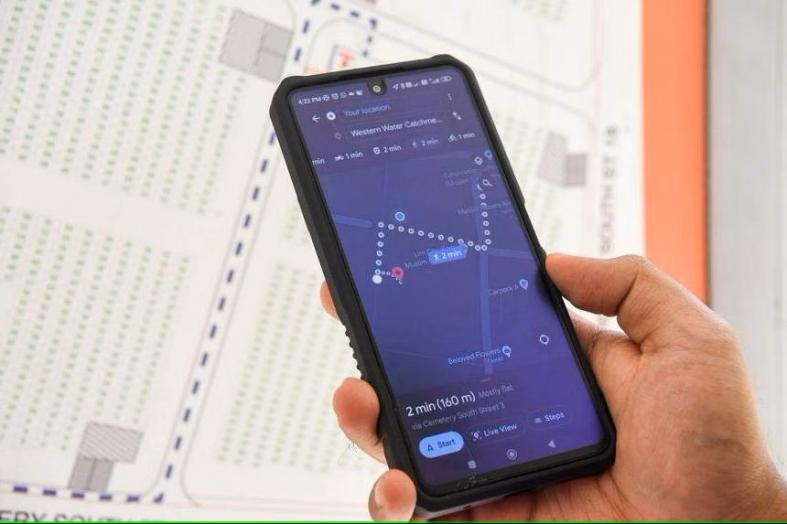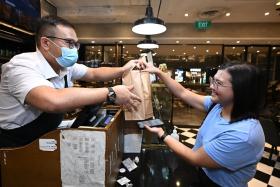Ex-cemetery worker builds app to help visitors find Muslim burial sites in Lim Chu Kang, Jalan Bahar
A former cemetery worker has created a mobile app for visitors to easily find where their loved ones are buried among the tens of thousands of graves in Lim Chu Kang and Jalan Bahar.
Users receive real-time directions to the grave sites on Google Maps by keying the plot numbers into the app, instead of having to refer to maps on signboards scattered around Muslim cemeteries Pusara Abadi in Lim Chu Kang and Pusara Aman in Jalan Bahar.
The cemeteries are organised into more than a dozen blocks, each containing thousands of burial sites. These are tough to navigate as the blocks are not always located in sequence.
The graveyards stretch across the size of around 10 football fields and can leave visitors confused and wandering around in circles, said cemetery staff.
Mr Ramzul Ihsan, 36, said he spent more than a year attaching the coordinates of more than 66,000 burial sites to a digital map on his Kubur Search app. “Kubur” means cemetery in Malay.
To build the virtual map, he digitised the cemetery maps found on signboards at the graveyards and then visited each site to add the exact coordinates of each plot.
“Not all the graves have number plates attached, and some older ones are just simple mounds, surrounded by weeds,” said Mr Ramzul. “It can be hard to get your bearings.
“I had to walk around all the blocks to make sure the plots are there and take the coordinates. It was a very manual process. Then I made sure the plots aligned properly on the virtual map.”
The app does not require names or details of the deceased to locate the plots and it does not collect personal data from its users, said Mr Ramzul.
The plot number is issued when a person is buried, and, if forgotten, can be obtained only by contacting the National Environment Agency, which oversees the cemeteries.
Mr Ramzul worked in the two cemeteries for around three years, building tombstones and cleaning graves until a back injury in 2022 forced him to leave.
He now works from home, developing the app and providing 3D-printing and laser-cutting services. He studied electronics engineering in school and learnt app development through online courses.
Listed on the crowdfunding site Kickstarter in June, Kubur Search is $200 into its $3,000 target, which Mr Ramzul said will be used to cover the app’s operating costs when it is launched on July 31.
The app is being used by his friends and former colleagues at the cemeteries ahead of its launch.

If Kubur Search is a hit, he will consider advertising to earn income from the project, and expand the service to other large cemeteries, including Chinese cemeteries nearby. He will also offer a service to search for plots not on the map.
While the app will not fix the most common issue of visitors showing up without the plot number in the first place, Madam Jameela Bee, director of Jasa Budi Muslim Casket, which helps to conduct funerals, said the app can help first-timers who visit the cemeteries. “It’s not easy for them to navigate the cemeteries.”
At least five visitors ask for directions to specific plots each day, said Mr Rosman Mustapa, who sells flowers at the entrance of the cemetery in Lim Chu Kang.
The sections share similar names and plot numbers are repeated across each block.
“They ask me where is the section, but sometimes I also don’t know how to help them. Sometimes people walk very far, but then realise they are in the wrong area.”

Each time he visits his parents’ grave, Mr Jamal Ahmad, 61, directs the cab driver to the road nearest to the burial site, which he has committed to memory since he attended his mother’s funeral in 2014.
“I don’t know the exact plot number, so I rely entirely on memory,” said Mr Jamal, who works in the services industry.
“But an app would be helpful because I cannot imagine how to direct any member of the family or visitor to the site if I’m not there to guide them.”
Get The New Paper on your phone with the free TNP app. Download from the Apple App Store or Google Play Store now


